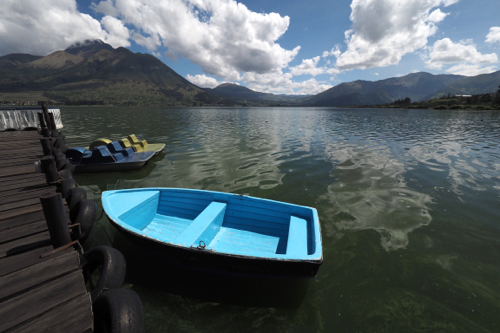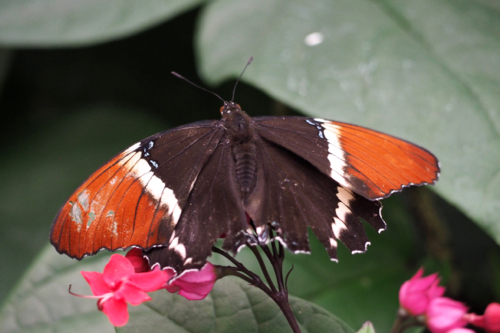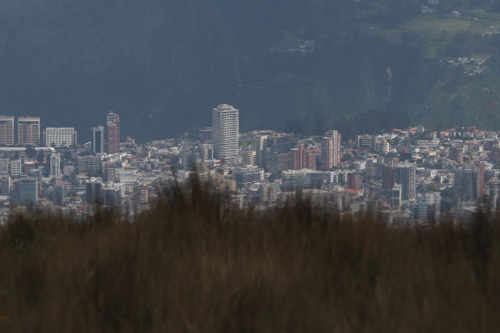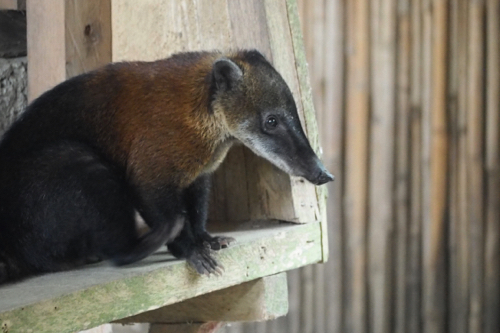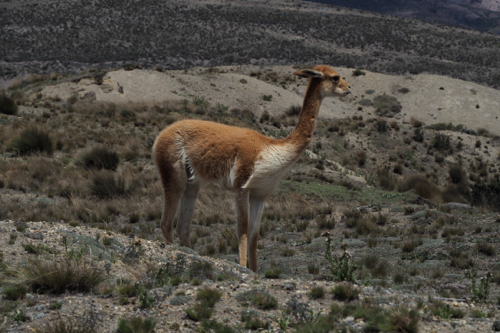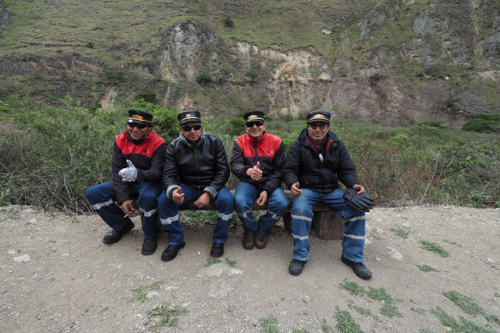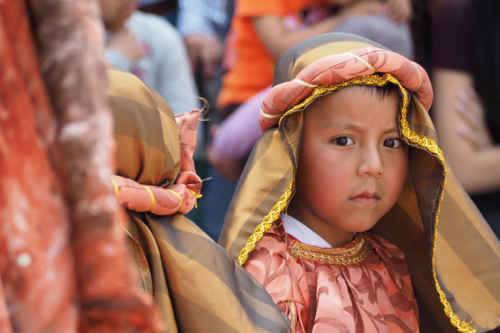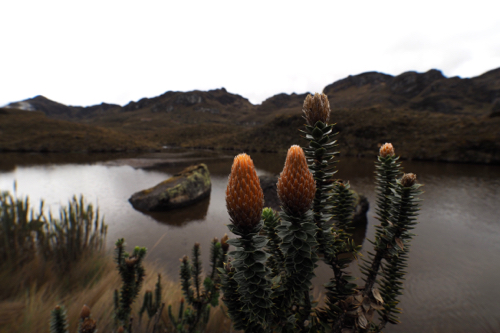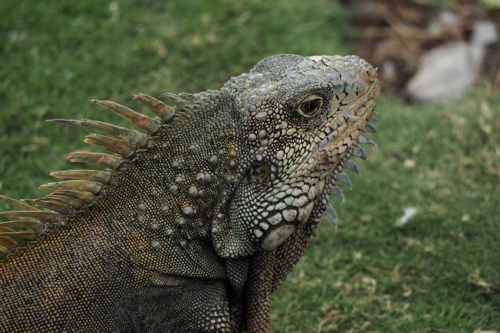December 16, 2017. Bogotá, Colombia to Quito, Ecuador.
We were up early for our flight to Quito in Ecuador.
The hotel staff had been fabulous but failed on the last day. The shuttle to the airport didn’t turn up on time, so they had to call us a taxi.
And I loathe taxis.
When we arrived in Quito we were expecting another hotel shuttle, that also didn’t show up.
Again we caught a cab.
The hotel Sebastian apologised profusely and upgraded us to a suite.
It was a good result.
The hotel was a fair way out of the old town and this seemed like a problem at first. However after we wandered around the old city we discovered that it wasn’t a great place to stay. There were very few restaurants and even fewer hotels.
In the end the hotel Sebastian was a excellent choice.
Ecuador as its name suggest is on the equator. Officially it is the República del Ecuador. Which, when translated from the Spanish, means the Republic of the Equator.
Ecuador has a very diverse ecosystem, which includes the Galápagos Islands. In recognition of its unique ecological heritage, the 2008 constitution legally recognises the Rights of Nature. This means that the environment has legal standing.
Ecuador was the world’s first country to follow this course of action.
December 17, 2017. Quito, Ecuador.
Though online sites we had learnt that renting and driving in Equator was both expensive and dangerous. The hotel suggested that one of their staff could arrange for an English speaking driver to take us on a day trips out of Quito.
Enter José.
Our first tour was to the indigenous market town of Otavalo.
On the way we stopped for coffee and a local specialty called Bizcocha cookies. Bizcocha means biscuit in Spanish.
They are a buttery biscuit that comes with a local stringy cows cheese, that’s a bit like mozzarella.
They have been baked there since the Spaniards conquered the area. They are made of yeast dough that must rise first and they hardly taste sweet at all.
We then detoured to Lake San Parlo and then drove onto the market.
It is open seven days a week but it’s busiest day is Saturday.
This was Sunday so everything was a little quieter – even the traffic.
At the market there was very little pressure to buy, which was good as we rarely do.
After the market we drove to Penuche Falls, a beautiful area surrounded by eucalypts.
We were glad that we had heeded the advice and not tried to self-drive in Ecuador – the roads were frantic and the drivers mad.
December 18, 2017. Quito, Ecuador.
On our next trip with José we headed north out of Quito. Crossing the equator we climbed to 2,800 metres and then descended and headed towards the coast.
We were accompanied by a wide variety of music.
In the morning it was Rock n’ Roll and Classic 80s’ and 90’ Pop.
In the afternoon, Latin Pop.
José seemed to love waterfalls and wanted to share his passion with us.
After visiting the Mindo National Park and taking the La Tarabita cable car across the Mindo River we went to the Sanctuary of the Cascades.
There were plenty of waterfalls here and we went to them all.
The Mindo Valley is a mountainous watershed in the western slopes of the Andes and one of the most diverse ecosystems in the world. Here the Chocoan lowlands meets the Tropical Andes. Much of the area is in cloud, so there is a constant mist in the air.
It was then onto the Mariposario Butterfly Park, where there was also a variety of bird, including the illusive hummingbird.
On the return trip to Quito the cloud dropped and we were in heavy mist, which is understandable, as the area is called the Cloud Forrest.
José predicted that the weather would be fine in Quito.
He was right.
December 19, 2017. Quito, Ecuador.
Our last morning in Quito was a bit more leisurely. We hadn’t planned to do too much other that a little bit of sightseeing and booking some advanced accommodation.
After breakfast we went looking for a coffee and discovered Isveglio Cultura del Café.
This was a truly Third Wave coffee house. Well designed, with their own coffee brand and a barista that knew what he was doing.
From near our hotel we could see the Teleferico de Quito and decided to take a look. This is a cable car that climbs 2,237 linear metres, from near the edge of the city, to the Cruz Loma lookout, on the east side of Pichincha Volcano. The lookout is just under 4,000 metres above sea level so we were getting a full high altitude experience.
At the top there are many walks and lookouts, or miradors, so we could get a great view of Quito and the surrounding landscape.
The Teleferico de Quito was built by the French company Sigma and opened in 2005.
After our high altitude adventure, we went back to Isveglio Cultura del Café. It was another excellent coffee for me and lunch for Thea, which included a juice made from the fruit of Soursop.
December 20, 2017. Quito to Tena, Ecuador.
While we had been doing our day trips we had arranged for José to show us more of Ecuador.
We engaged him independently from the hotel, so there was a bit of clandestine activity involved in our pick up.
We were collected from our hotel by José Dos who then drove us to another hotel where we met our José.
As it turned out the Renault Sandero, that we had been picked up in, was the one we were to use on our trip.
It wasn’t a patch on the van we had been using over the last few days, but then were weren’t paying nearly as much either.
The first stop was Papallacta Hot Spring, but it was wet, cold and crowded, so we kept moving.
Just down the road was a small café, so we stopped for a coffee before heading off again.
They had a fire and a very friendly dog, who sat, leaning up against my leg.
I would like to think he was getting attached to me, but I really think it was the warmth of the fire he was drawn to.
Having done little but drive, José suggested we visit Zoo El Arca.
Unfortunately it was a zoo in the old model, with caged birds and animals that looked a bit sad.
There were two monkeys that had obviously escaped but were still hanging around for the free food.
They were the only animals that looked happy.
A saving grace for the zoo was that they did take in abandoned animals.
There was even a group of lions that had come from a circus.
In the evening we walked around Tena. Firstly to the Parque Amazónico ‘La Isla’ which is on an island in the Tana River and then around the town.
It was getting close to Christmas so the town was decked in lights.
December 21, 2017. Tena to Baños, Ecuador.
Our first stop for the day was at Misahualli on the Rio Napo, a tributary to the Amazon.
José negotiated for us to take a boat ride up the Napo and our fist stop was at a local village.
The Kichwa Shiripuno Community was started in 2005 and now has 50 families. It is primarily a tourist development, but one that benefits the entire village.
We were introduced to Marina who was our local guide. She demonstrated making a local fermented drink from the Guayusa plant. Then there was a demonstration of local dancing and we were invited to participate, which we did very clumsily.
Continuing on we went a little further along the river to Jamal Maki, which was a combination of a museum, botanical garden and zoo.
We then stopped at Puyo for lunch. My usual lunch is a coffee, but sadly there was only Nescafé – I had a juice.
The Stray Dog Brewpub in Baños was a strange place.
It was recommended by the owner of the La Posada del Arte Hotel – who was the father of the chef at the pub.
The beer was fine but Thea’s wine was disappointing and the staff seemed disinterested. There were a number of stray dogs hanging around, so at least the name had some authenticity.
We had been told that the food there was a fusion of US Brewpub and Ecuadorian. We didn’t find many signs of cross culture in the menu, it was mainly burgers and fries.
Disappointedly we continued on and found an Italian place that was close by. It wasn’t trying to be anything but Italian.
It did it very well, as the food was delicious.
Baños gets its name from the Spanish word bath. Which is understandable considering the main feature of the town is the nearby hydrothermal springs.
The local basilica also has a link to the springs and is known as the Church of the Virgin of the Holy Water.
Our hotel was just on the edge of the town and we could see the Cascada de la Virgin for our window. The waterfall empties near the thermal baths.
December 22, 2017. Baños to Alausí, Ecuador.
Driving out of Baños, heading towards Alausí, we were leaving the jungle behind.
Our plan was to stop off at Chimborazo, the earth’s highest active volcano, standing at 5897metres.
Everything was dependent on the weather.
Ecuador is part of the Pacific Ring of Fire. This area of volcanic eruptions stretches from the south of South America and curves up over North America, Canada, across the Pacific to the coast of China, through Japan, the Philippines, Indonesia and down as far as New Zealand.
Fortunately Australia isn’t included.
This is a 40,000 km horseshoe that contains more than 75% of the world’s dormant and active volcanoes.
About 90% of the world’s earthquakes occur along this line.
Today were we going to be driving along the Avenue of the Volcanoes.
Our first stop was at the Salasaka Craft Fair. I was hoping to get some good portrait shots of the local traders. The place was empty and I stood out too much to get any sneaky long lens-shots.
On the road to Chimborazo we got some great views, but as soon as we got to car park, the cloud moved in.
We then drove to Alausí, where we were staying for the night.
The last 18 kilometres were in cloud, until we got into Alausí, which was under it.
When we arrived in Alausí it seemed busy enough but when we went to look for dinner we found that everything was shut.
Well at least the places that looked interesting to us.
It was the Friday before Christmas and I think this was a family time. As most of the restaurants are owned by families they were off with them, rather than looking after the odd annoying tourist.
After a very average meal in a small local cafe, we retired to the Hotel Noris.
The main purpose of our visit to Alausí was to take the Devil’s Nose train ride.
Regarded as one of the 10 best train trips in the world it travels through the Ecuadorian Andes.
It was an 8am start, so an early night was fine with us.
December 23, 2017. Alausí to Ingapirca, Ecuador.
First thing in the morning we took the Devil’s Nose train ride, which was a return journey from Alausí to Sibambe.
The railway provided a guide, Gabriella, to brief us on the railroad.
The Devil’s Nose Mountain is also known in the local language as Cóndor Puñuna, or Condor’s Nest. This is where these majestic bird, would have lived, before the intrusion of civilisation and the railroad.
The railway was started by the then president, Eloy Alfaro, in 1899 and completed in 1908. Its purpose was to connect the capital, Quito to the coastal city of Guayaquil.
Thousands of foreign workers, mainly from Jamaica and Puerto Rico, were brought into the country to help build Alfaro’s dream.
It has been reported that at least 4,000 workers died building the railroad. They perished from yellow fever, snake bite, but mostly dynamite.
Legend has it that Alfaro made a pact with the devil to complete the railway – hence the name.
Half way through the journey we stopped at Sibambe Station where we were entertained by local dancers and a young, very enthusiastic, guide called Angelo. He also contributed to the colourful history of the Devil’s Nose.
Apart from the tragedy of its construction, the railroad is in fact as a huge feat of engineering. The rail line snakes its way through the rugged Andean terrain, with steep ravines and towering cliffs.
The most difficult part of the construction was at the El Nariz del Diablo, the Devil’s Nose, where a series of zigzags had to be carved out of the rock. This allowed the train to climb 800 metres with a gradient of 1-in-18.
Not long after leaving Alausí, heading towards Ingapirca, we were back into cloud. It got thicker and thicker and José had his hazard lights on for a lot of the trip.
The usual road idiots like taxi, truck and bus drivers ignored the danger and drove in their typical manner.
We passed what appeared to be a fatal accident between truck and a motorcycle.
As you would expect the bike came off worst.
Later in the day we visited the Inca Ruins at Ingapirca, which were a short walk from our accommodation.
These are the largest known Inca ruins in Ecuador.
Just looking at the way the buildings were constructed, we could get an idea of how advanced the Incas were in their engineering techniques. There was one wall in the Temple of the Sun that had joints between the stones that were so close you couldn’t fit a sheet of paper.
After visiting the ruins we took the Sun Valley Walk, around the outside of the ruins, before heading back to our hotel.
We were staying in a 200 year Old farmhouse, Posada Ingapirca.
The property, formerly an old hacienda, was on 10,000 hectares of land. Some of the building materials have been appropriated from the Inca ruins, just down the road.
At dinner we were the only guests, in fact I think we were the only people staying in the hotel. We had the full attention of the ‘front-of-house’ staff – who consisted of one guy.
He waited our table and was on the front dest when we arrived. He even provided us with a hot water bottle when we retired that night.
It was very welcome.
December 24, 2017. Ingapirca to Cuenca, Ecuador.
We have had continual money issues in Ecuador. Firstly with the ATMs and then transferring money to José. So, after failing to pay him with a bank transfer, we decided the only other option was to give him cash.
This meant a daily visit to an ATM, once we could find one, that would cough up the cash.
Having succeeded in paying José we were off for another day of exploration. Our first stop was at the Santuario de la Virgen del Rocío (Virgin of the Rock Church)
This meant a climb of 144 steps up the hill to the entrance of the sanctuary.
This Gothic church was started in 1893, using stones from the river that lies far below, near the town of Biblán. That year a devastating frost killed the animals and the crops. The local believe that a miracle changed the weather after a small image, of the Virgin, was placed on the Zhalao Hill by the local priest, Father Daniel Muñoz.
They then built the sanctuary on that very spot.
We then came back down Zhalao Hill and visited the town of Biblán and the Church of San Francisco.
They were holding a Christmas Eve mass and the church was full.
The local indigenous people were lined up outside hoping to get some rewards from the Christmas spirit.
La casa de la Makana was next, which was an opportunity to buy. They were selling hand woven scarves and other clothes and everything was hand dyed, using natural colours.
Following a brief stop at Ecuagenera, an Ecuadorian orchid showroom, where no photos were allowed, we went to José’s home town of Gulaceo. Lunch was in the local market area where roast pork was the specialty.
The crisp pig carcasses were lined up waiting to be carved. Right opposite our table was the award winning Mamá Suca. I know she was an award winner, because she had a large sign telling me.
Next was the highlight of the day, the Parade for Baby Jesus. It was the complete story of the bible – both Old and New Testaments. We stayed long enough to see Jesus going to the desert for 60 days and 60 nights.
This was the most religious Christmas Eve I had ever had.
Chordeleg, a small town and Ecuadorian Jewellry Centre, was our next destination and an opportunity for me to get a coffee – there was none to be had in Gulaceo.
We then ran headlong into another Christmas parade.
It was a big day of touring and the Renault Sandero was suffering. The more we travelled the more parts were falling off.
It was held together with more tape than you’d find in a Gaffer’s truck.
December 25, 2017. Cuenca, Ecuador.
It was Christmas Day in Cuenca and the place was dead.
José decided we would be better going to the country as nature doesn’t close for public holidays.
But it doesn’t necessarily try very hard, as there was cloud covering Cascade El Chorro. These were the waterfalls we had come to see.
The misty weather didn’t deter the locals, who had come to look at, and stand under, the cascading water.
The falls drop 100 meters, so it would have been exhilarating and cold – not my idea of the best way to spend Christmas Day.
Our next stop was Laguna da Bussa, which wasn’t far from the waterfall. There were quiet a few people enjoying the holiday break, walking, fishing and using the paddle boats.
The lake was small and not much to look at but the walk around it was very diverse.
Boardwalks, forest trails and grasslands were all contained in the 2.5 km circumference.
Christmas night was spent at the restaurant in the hotel next door, which was rather ordinary.
It had been a quiet Christmas Day.
December 26, 2017. Cuenca, Ecuador.
This was our day to tour Cuenca, a UNESCO World Heritage city, with José.
Cuenca was founded in 1557 and is regarded as Ecuador’s most European city, due to the abundance of Spanish colonial architecture.
However archeological evidence goes back much further. Remains have been found, in the local Cave of Chopsi, suggesting hunters inhabited the area as far back as 8060 BC.
We spent some time in the Metropolitan Cathedral. Built in 1885, it one of the biggest churches in Latin America.
After our city visit we made a short drive up to Baños, a small spa town that also overlooks Cuenca.
Then the rains came.
We found Gozo, a very nice café that served an excellent espresso.
The rains continued so we drove down to the tourist office, which was in the bus terminal. We were there to arrange a guide for a tour of the Cajas National Park the next day.
The bus terminal car park was chaotic with people being dropped off after the Christmas break.
We finally got to the tourist desk, only to be told that we didn’t need a guide, as the park is free.
José was even given a number to call if someone demanded payment.
We will wait and see what happens tomorrow.
December 27, 2017. Cuenca to Guayaquil, Ecuador.
We woke to find half of Cuenca covered in cloud. Well at least the rain had stopped – for now.
By the time we were ready to leave the rain had returned.
In a way I was glad to be leaving Cuenca, not the city but the Hotel Presidente.
Our first room was so noisy that we had to move, the WiFi was non existent, breakfast was meagre and the hair dryer went bright red inside and smoke poured it when it was turned on.
It was certainly not fit for El Presidente, let alone simple tourists like us.
We drove the 30 kilometres to Cajas National Park, and after a briefing from the local guides, we walked the Camino de Garcia Moreno.
On the walk we met Yap a nurse from Singapore and she accompanied us for the 2 hour hike. It was only 2.75km but we had to do a lot of backtracking as many of the tracks were dead ends.
On the road from Lake Toreadora to Guayaquil we ascended over 4,100 metres. Much of it was in thick fog.
There was the usual array of idiots who passed on double lines and blind corners.
Once we were out of the mountains the temperature and humidity jumped – we were now in the tropics.
December 28, 2017. Guayaquil, Ecuador.
We settled into the Hotel Continental, a far more enjoyable hotel than the one in Cuenca. The morning was spent planning the next stage of our trip in South America.
Right over the street from our hotel was Parque Bolívar. This is the strangest inner-city parks I have ever visited.
Iguanas of all sizes mingle with the people and pigeons. They wander around without a care and are fed by hand even petted. Some found refuge in the trees but most just stroll, very slowly, around the park.
At night they all go into the trees.
The park was first established in 1895, after a bequest from Miguel Suarez Seminario. And was known then as Parque Seminario. Today it is Parque Bolivar or Iguana Park, for obvious reasons.
In the afternoon we walked along the Malecón Simón Bolivar. This is a boardwalk, along the Guavas River, that was built in 2000. It runs from near the centre of the city for about 2.5 kilometres down the west shore of the river.
It is full of shops, bars and food courts. At the end of our stroll we found the La Perla, which was only completed in 2016. This is a giant 57 metre high ferris wheel that has a great view of Guayaquil from the top.
In Ecuador Christmas decorations are a strange fusion of biblical piety and American commercialism.
Santa and his elves sit side-by-side with the lavish nativity scenes.
At the Hotel Continental breakfast was available between 1am and 6am. Which was good as we had an early flight the next morning.
We were off to Peru.

